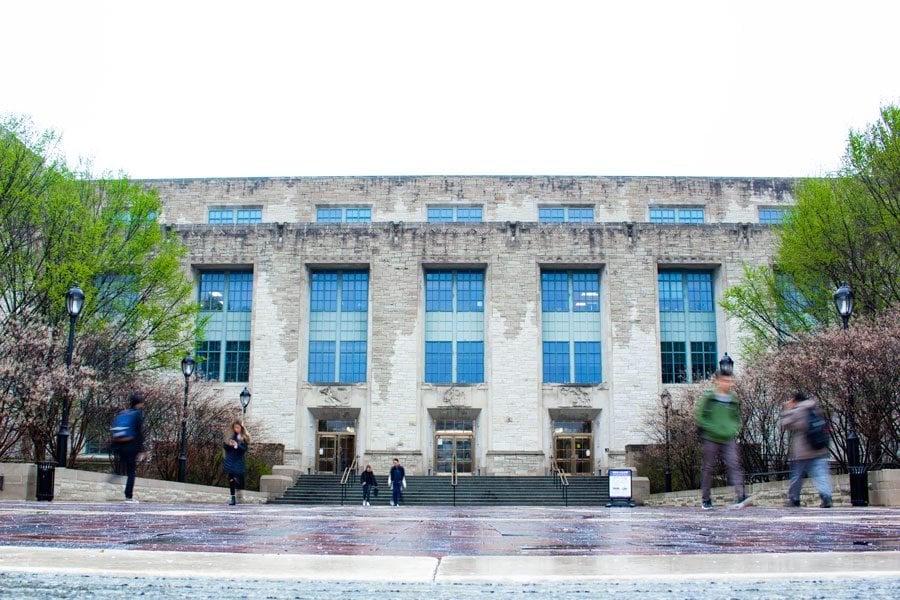Northwestern researchers develop synthetic material that mimics living creatures
Daily file photo by Evan Robinson-Johnson
The Technological Institute, home to many chemistry classes. Chemistry Prof. George Schatz led the computer simulations for a team of NU researchers that developed a hybrid material that mimics living creatures when exposed to light.
July 2, 2020
Northwestern researchers recently developed a hybrid material that mimics living creatures when exposed to light.
Composed of hydrogel polymers, peptide-based molecules known as peptide amphiphiles and small, light-absorbing molecules known as photoswitches, this material can contract like muscles when exposed to light.
The peptide amphiphiles form the fibers in the material. The photoswitch molecules go from uncharged to charged states when light is shined on them. Then, the water in the hydrogel polymers will either go into or out of the hydrogel polymers, causing the material to expand or shrink.
“With the fibers present, you can get the water to come in and out of these hydrogel polymers so much better than you could without it,” chemistry Prof. George Schatz said. “So basically the fibers are acting like pipes.”
Schatz added that the water flows out of the hydrogel through these “pipes” when the photoswitch is in its uncharged state, and vice versa.
The experimental studies were led by chemistry, Feinberg and McCormick Prof. Samuel Stupp, and the computer simulations were led by Schatz. Postdoctoral fellows Chuang Li from the Stupp laboratory and Aysenur Iscen from the Schatz laboratory are the co-first authors of the paper.
Schatz said Stupp’s group developed the amphiphile fibers almost 20 years ago, while his group figured out how to model the properties of these fibers on a computer roughly 10 years ago. He said the project started about three years ago after both professors found combining their groups would give them the ability to better understand what they make and predict new properties based on changes to the composition of the peptide amphiphile fibers.
“It occurred to us that maybe if we combined the fibers with the polymer and the photoswitches that we would make better versions of these expandable, intractable materials,” Schatz said. “So that then gave us the idea that maybe we could make materials that were better actuators in some sense, meaning they would either move faster when you shine light onto them, or that they would expand or contract by more than had been done previously.”
Stupp said this new material can be used in many different applications, including manufacturing, chemical production and even medicine.
“A very exciting possibility is to use them in advanced medicine too,” Stupp said. “For example, be part of surgical procedures, or perhaps to remove a blood clot from the brain or other parts of the body, and to basically allow them to be materials that can assist with very difficult surgery.”
Stupp added that this material may also be used as devices to deliver drugs to specific parts of the body.
Li said he felt very proud of the project, not only because it was published in a “high-impact” journal, but also because the concepts proposed in this project will help others design more materials that will mimic living matter. He added that this project also taught him what it takes to do good research, as it took three years to complete.
“This project also tells us that good research really takes a long time and a lot of effort,” Li said. “But if we could keep focusing on it, eventually we can make it.”
Stupp said the group is also working on other materials that have common features with this current material, including a material that responds to magnetic fields instead of light.
Email: [email protected]
Twitter: @vivianxia7


